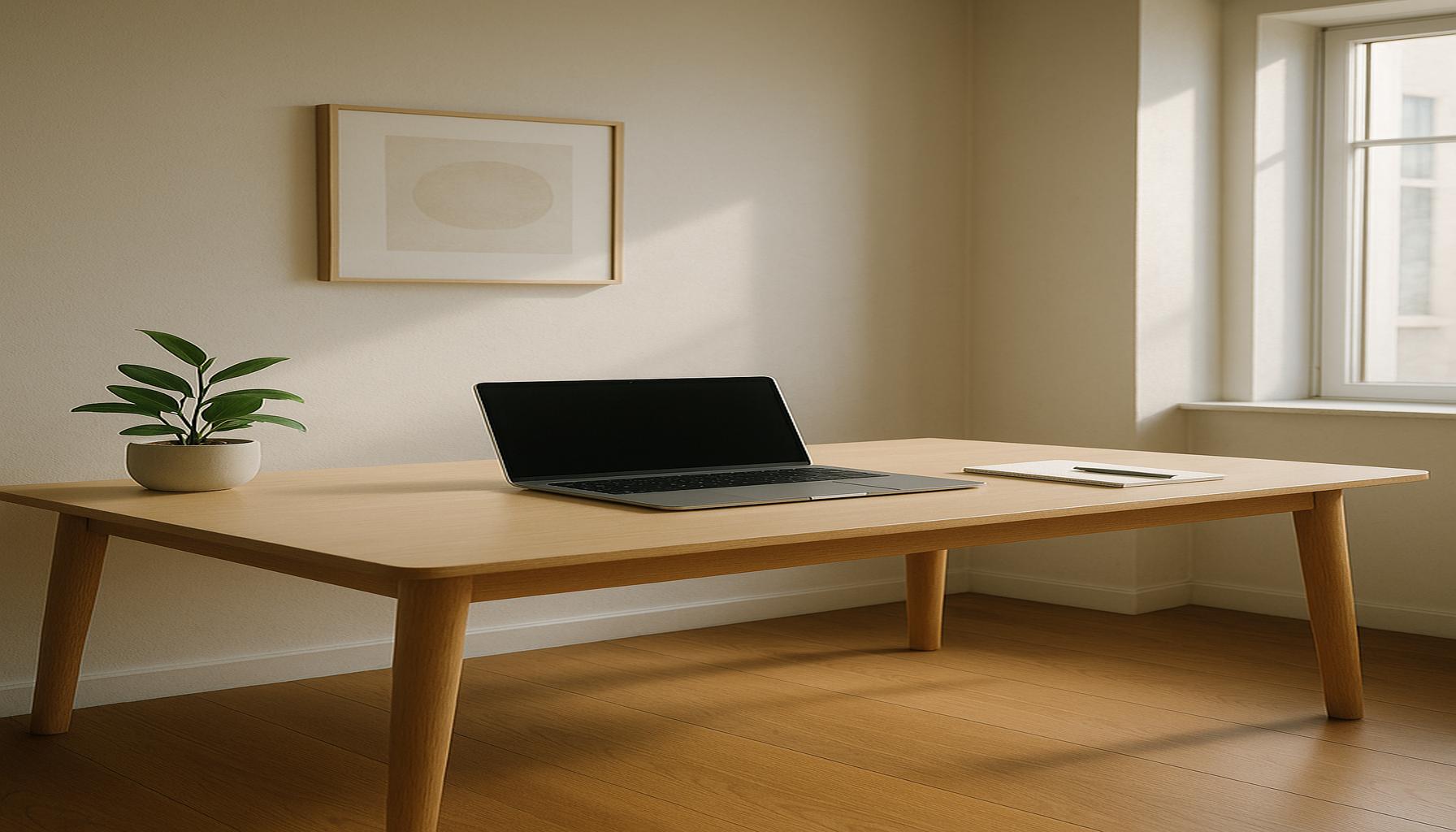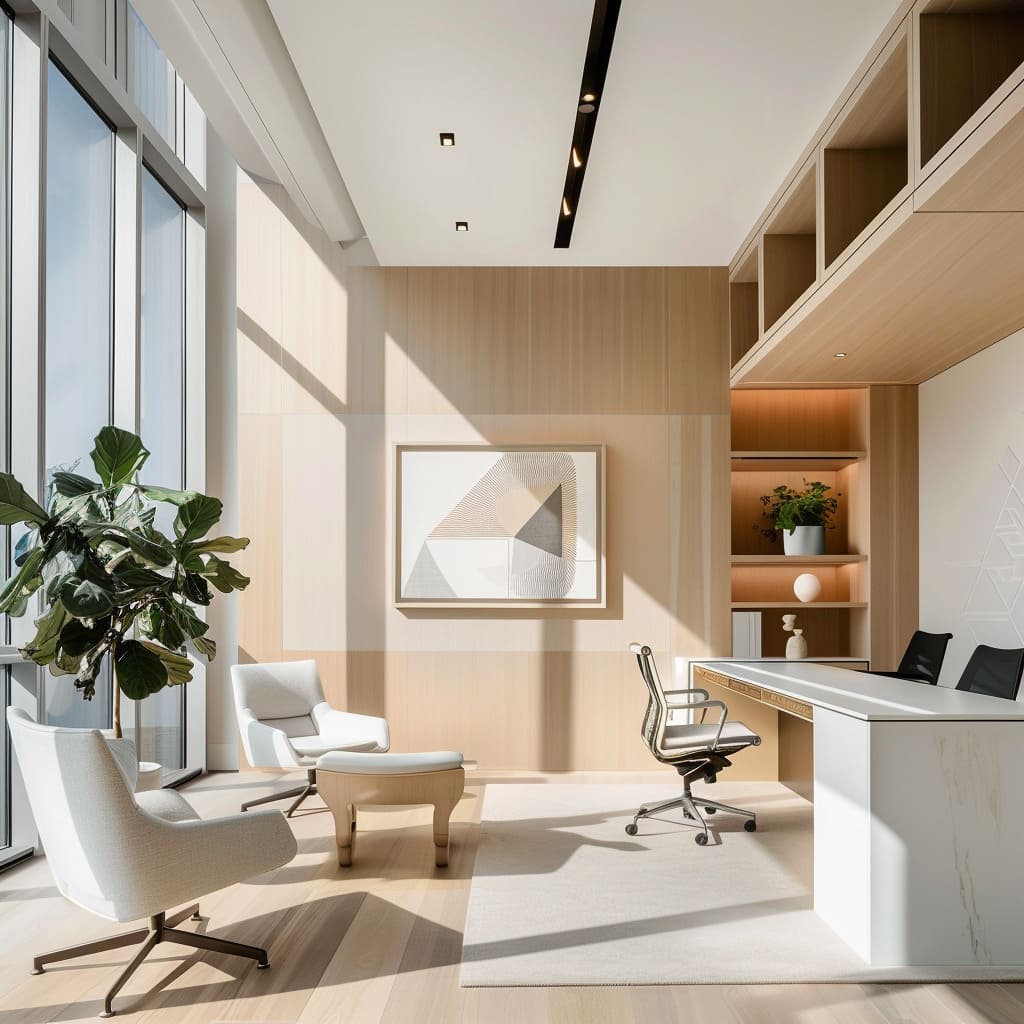The Impact of Minimalism on Workplace Organization: Creating a Productive and Inspiring Environment

The Impact of Minimalism on Workplace Productivity
In an era where multitasking is normalized and distractions abound, the practice of minimalism offers a refreshing perspective on workplace organization. By prioritizing simplicity, functionality, and intentionality, organizations can cultivate environments conducive to focus and inspiration. This shift towards minimalism is transforming offices, from small startups in Silicon Valley to established firms in New York, with remarkable results.
One of the most significant implications of embracing minimalism is the reduction of distractions. Studies have shown that a clutter-free office space allows employees to concentrate better on their tasks. For instance, companies that have implemented open-concept workspaces with limited decoration and fewer visual distractions report marked improvements in employee focus. When an employee’s desk is tidy and organized, they are better equipped to tackle complex projects without the overwhelming feeling that surrounds clutter. This clarity in the physical workspace translates directly into mental clarity.
Improved efficiency is another compelling advantage of minimalism. By streamlining processes and reducing unnecessary items, employees can make decisions more swiftly. For example, a technology firm that adopted a minimalist approach found that eliminating redundant communication channels led to quicker project turnaround times. Employees were able to spend less time sifting through emails and more time collaborating effectively. A well-structured minimalist workspace fosters an environment where quick thinking and decisive action become the norms.
Moreover, minimalism can greatly enhance creativity. A clean, streamlined workspace often sparks innovative thinking by encouraging employees to approach tasks from fresh angles. Organizations that invest in minimalist designs—think bright, spacious areas with natural light—create atmospheres where creativity can flourish. An advertising agency in Chicago replaced its old cubicle setup with open areas adorned with only essential tools, thus igniting a burst of creative outputs among its teams.
Furthermore, research underscores the correlation between minimalistic environments and employee well-being. A study conducted by the University of California revealed that clutter can significantly impede cognitive function, underscoring the necessity for organizations to critically evaluate and refine their workspace aesthetics. With employees spending a considerable portion of their day at work, cultivating a positive environment is not merely about aesthetics; it is fundamental to enhancing overall job satisfaction and productivity.

As companies increasingly look for ways to improve the employee experience, exploring minimalist principles is not just a trend—it’s a strategic move. In this article, we will delve deeper into the transformative power of minimalism in enhancing workplace organization, paving the way for a more positive and productive work environment. The journey into minimalism opens up exciting possibilities that can reshape the way we approach work and workspace design for the better.
DISCOVER MORE: Click here to learn about minimalist organization
Transforming Office Spaces: The Essence of Minimalism
The adoption of minimalism in workplace organization is not simply a design trend; it is a comprehensive approach that can significantly alter the dynamics of a workplace. Minimalism emphasizes the significance of essentialism—focusing on what truly matters while eliminating the excess. This philosophy can shape an office environment that not only supports productivity but also fosters an atmosphere where innovation can thrive.
One of the foundational principles of minimalism is the concept of intentional design. When an office is intentionally designed with minimalism in mind, every item, color, and layout choice serves a purpose. Companies across the United States are embracing this by implementing carefully curated office layouts. The results are undeniable: for instance, tech startups in Austin have reported a 20% increase in employee satisfaction when transitioning to open spaces that feature minimalist furniture and unobtrusive décor. The rationale is simple: when distractions are minimized, the focus is amplified.
Key Elements of Minimalist Workplace Design
To grasp the core elements that make minimalism effective in workplace organization, consider the following:
- Decluttering: The first step to minimalism involves removing unnecessary items. A clear desk fosters mental clarity and encourages a productive mindset.
- Smart Storage Solutions: Use of smart storage options allows for easy access to essential items without cluttering the workspace. For instance, wall-mounted shelves can keep frequently used materials at hand while maximizing floor space.
- Natural Light: Incorporating natural light into the design can energize employees and contribute to an inspiring atmosphere. Research indicates that exposure to natural lighting improves mood and cognitive functions, leading to increased creativity.
- Color Palette: A neutral color scheme can evoke calmness and stability. Organizations are moving towards soft hues that promote a sense of tranquility, further enhancing employee focus.
These elements are not merely aesthetic choices; they are strategic decisions that synchronize with the overarching goal of fostering a productive and inspiring environment. The positive correlation between a well-organized minimalist workspace and employee output is supported by various studies, revealing that organizations with intentional office designs report lower stress levels among employees.
It’s essential to understand that minimalism in the workplace also necessitates a cultural shift. Embracing a minimalist ethos requires redefining values within the organization. Management plays a crucial role in this transformation by setting an example and encouraging a culture that prioritizes focus and intentionality over busyness and distraction. Communication, collaboration, and creativity must be emphasized as part of a minimalist work culture that aligns with streamlined workspace designs.
In the following sections, we will explore real-world examples of how different companies have leveraged minimalism, the challenges they faced, and the lasting benefits they’ve seen in fostering a thriving work environment. The intersection of minimalism and workplace productivity is a critical area worth examining, promising insights that could reshape traditional notions of office design and employee engagement.
| Advantage | Description |
|---|---|
| Increased Focus | A minimalist approach reduces distractions, allowing employees to concentrate better on their tasks and improve overall productivity. |
| Simplified Workflow | Organizing workspaces with fewer items leads to a streamlined workflow. This organization enhances efficiency, making it easier to navigate and find essential tools. |
Minimalism fosters a sense of clarity in the workplace that is often refreshing and invigorating. Employees are encouraged to prioritize essential tasks, leading to greater job satisfaction. The result? A workspace that motivates individuals to strive for excellence rather than getting lost in clutter and distractions. As businesses look to enhance their environments, embracing minimalism offers profound benefits that can revolutionize how teams collaborate and perform. Moreover, studies have shown that such environments significantly reduce stress levels, allowing for a more harmonious balance between work and personal life. This transition to minimalist spaces invites a culture of inspiration and productivity, paving the way for growth and innovation.
DISCOVER MORE: Click here to simplify your life
Embracing Technology: The Role of Digital Minimalism
As the concept of minimalism permeates physical office spaces, it seamlessly extends into the digital realm as well. Digital minimalism focuses on prioritizing essential tools and eliminating unnecessary digital clutter, which is an equally critical aspect of enhancing workplace organization. With employees increasingly relying on technology for communication and collaboration, streamlining digital workflows becomes paramount. The integration of minimalism in technology can significantly contribute to creating a productive and inspiring environment.
Organizations are rethinking their approach to technology by adopting practices that promote efficiency and clarity. For example, companies are recognizing the benefits of using all-in-one project management tools that eliminate the need for multiple applications that can overwhelm employees. By consolidating platforms into a single interface, businesses can improve collaboration and reduce the time spent switching between applications. As a result, tech firms in Silicon Valley have noted a 30% increase in project completion rates after implementing such integrated systems.
Key Strategies for Digital Minimalism in the Workplace
Here are some strategies that can help organizations embrace digital minimalism:
- Streamlined Communication: Encouraging the use of a single communication platform reduces the cognitive load associated with managing multiple email threads, messaging apps, and social media alerts. Solutions like Slack or Microsoft Teams facilitate seamless interaction while keeping channels organized.
- File Organization: A well-structured digital filing system can drastically cut down the time spent searching for important documents. By categorizing files using clear labels and maintaining a consistent naming convention, employees can retrieve necessary information promptly.
- Timely Digital Breaks: The practice of scheduling regular intervals for digital detox helps employees disconnect from their screens, reflecting the minimalist spirit of focusing on essential tasks without distractions. Encouraging “no-meeting” days can also give teams uninterrupted time to work on critical projects.
- Purge Unused Tools: Regularly reviewing the software and applications being used can identify programs that no longer serve a purpose. By removing digital redundancies, companies can refocus their energies on tools that truly enhance productivity.
Organizations that successfully implement digital minimalism often see an improvement in employee engagement. Research by the Productivity Institute indicates that workers who experience less digital clutter report greater job satisfaction, higher motivation levels, and enhanced creativity. These employees can focus their efforts on impactful work rather than getting bogged down by excess information and unnecessary tasks.
Moreover, the practice of minimalism in tech can lead to more sustainable work habits. By fostering a culture where prioritization becomes second nature, businesses may notice a decrease in employee burnout. In fact, a study conducted by the American Psychological Association suggests that individuals who engage in less multitasking experience lower stress and higher focus. By applying minimalist principles both physically and digitally, organizations can cultivate a resilient workforce capable of navigating a fast-paced business landscape.
In summary, the impact of embracing minimalism in both physical spaces and digital practices holds profound implications for workplace organization. By integrating these principles, companies not only enhance productivity and creativity but also contribute to a more cohesive company culture. This shift towards minimalism, both tangible and intangible, is a vital step towards creating an inspiring environment that thrives on intention and clarity.
DISCOVER MORE: Click here to simplify your daily life
Conclusion
The transition towards minimalism in workplace organization represents more than just a trend; it marks a significant evolution in how companies understand productivity, creativity, and employee well-being. By eliminating physical and digital clutter, organizations foster environments where employees can thrive. Minimalism encourages a culture of focus, clarity, and intentionality, essential for a productive workforce.
One of the most noteworthy aspects of this movement is the correlation between minimalism and enhanced employee satisfaction. As evidenced by various studies, workplaces that adopt minimalist principles see increased engagement and reduced stress, which directly translates into higher output and innovation. The integration of digital minimalism, alongside physical organization, allows employees to channel their energies into meaningful tasks rather than being bogged down by excess information.
Looking forward, businesses must consider the long-term benefits of minimalism not only for immediate productivity gains but also for fostering a culture of adaptability and resilience. As workplaces continue to evolve in the wake of technological advancements, the principles of minimalism offer a guiding framework that champions simplicity and focus. Companies that invest in creating inspiring and organized environments will not only attract top talent but will also create spaces where creativity flourishes, employee morale soars, and organizational objectives are consistently met.
In conclusion, the impact of minimalism on workplace organization offers valuable insights into crafting a more efficient, inspiring, and human-centric work culture. By embracing these principles, organizations can position themselves for success in an increasingly complex business landscape. The path towards a minimalist workplace is one paved with intention, ultimately leading to a brighter and more productive future for all.


